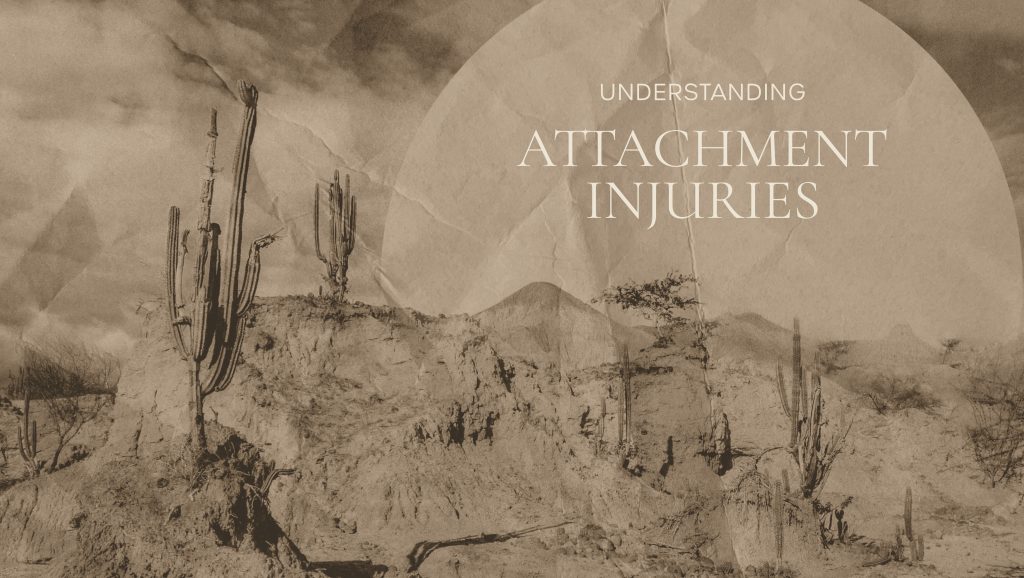Understanding Attachment Injuries
Attachment injuries, also known as relational trauma, occur when relationships with primary attachment figures are consistently inconsistent, misattuned, neglectful, or abusive. Attachment injuries can occur in any relationship that involves a significant emotional bond, at any stage of life — including parent-child relationships, adoptive or foster care placements, sibling dynamics, romantic partnerships, close friendships, religious or spiritual communities, and relationships with teachers or mentors. Unlike a single traumatic event (like an accident), attachment injuries are cumulative and pervasive, stemming from a lack of security, predictability, and attunement. When fundamental relational needs for safety, security, and connection are not met, or are met in unpredictable or harmful ways, it profoundly impacts the brain, nervous system, and sense of self.

This consistent disruption to secure attachment can lead to a variety of long-term challenges, including:
- Difficulty with emotional regulation: Struggling to manage intense emotions, leading to outbursts, shutdowns, or impulsive behaviors.
- Challenges forming healthy relationships: Fear of intimacy, difficulty trusting others, repeating unhealthy relationship patterns, or being drawn to unavailable partners.
- Low self-esteem and identity confusion: A pervasive sense of shame, worthlessness, or not knowing who they truly are outside of their relationships with others.
- Chronic feelings of emptiness or numbness: A sense of detachment from oneself or the world.
- Dissociation: Feeling disconnected from one’s body, thoughts, feelings, or memories.
- Physical symptoms: Chronic pain, digestive issues, fatigue, and other stress-related physical ailments due to a dysregulated nervous system.
Attachment injuries are often related to many mental health challenges, including C-PTSD, anxiety disorders, depression, and personality disorders. It shapes an individual’s internal working models – the unconscious beliefs about themselves, others, and the world – which then influence how they perceive and interact with new experiences and relationships.
HOW CAN WE HELP YOU?
Our dedicated team is committed to supporting clients and their families throughout their therapeutic journey.
